Cobbles vs climbs: The performance factors behind a Classics specialist
What separates a Cobbled Classics contender from an Ardennes challenger? Cyclingnews dives into the performance aspects behind the one-day specialists
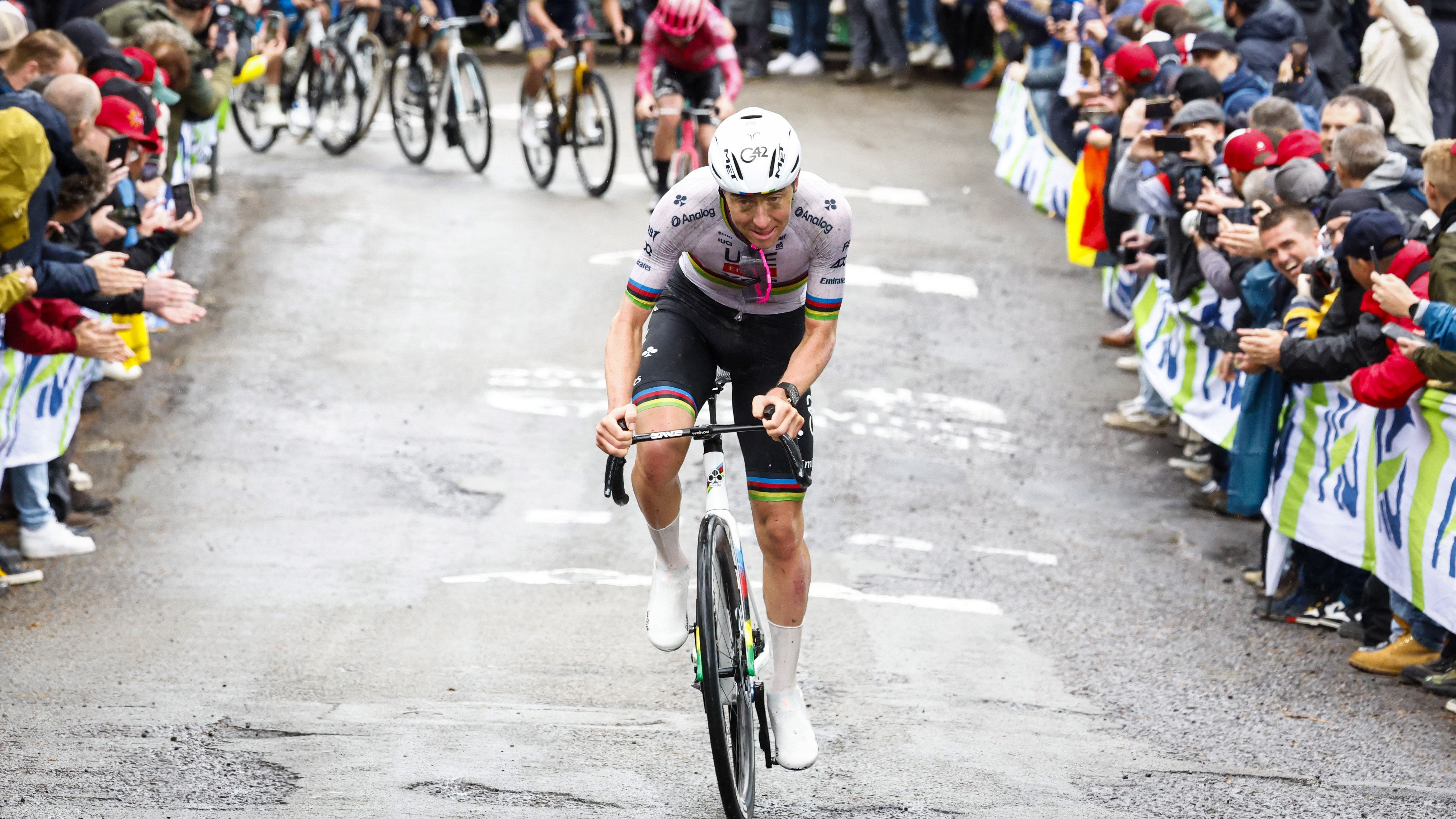
The 2025 Spring Classics have already treated us to some truly iconic races and breathtaking performances. Thrilling breakaways aplenty from Mads Pedersen, Mathieu van der Poel, Tadej Pogačar, Pauline Ferrand-Prévot, and Elisa Longo Borghini have been the main story of the classics so far, while Neilson Powless' three against one victory at Dwars door Vlaanderen harked back to the infamous Ian Stannard against-the-odds victory at Omloop Het Nieuwsblad back in 2015.
Now, we are partway through the Ardennes Classics of Amstel Gold Race, Flèche Wallonne, with the final spring Monument, Liège-Bastogne-Liège, just around the corner. But what makes these three races so unique, and such a different challenge to cycling’s prime cobbled Classics or even the Grand Tours?
Indeed, for a long period, since the likes of Eddy Merckx, there had been little overlap between riders who excel in the Spring Classics and those who excel in the Grand Tours. Famous Classics specialists, such as recent stars Tom Boonen, Fabian Cancellara, and Philippe Gilbert, all tasted success across both cobbled and Ardennes races, yet were never contenders for the Grand Tours.
Even then, there is a distinct difference between the types of riders that we have traditionally seen win the early-season cobbled one-day races, versus the latter and more arduous climbing terrain of the Ardennes Classics.
The likes of cobbled Classics stars Boonen, Van der Poel, and Johan Museeuw never tasted victory in Liège-Bastogne-Liège, for example. But we see a far greater crossover in Grand Tour riders performing well in the Ardennes, such as Primož Roglič, Romain Bardet, and Remco Evenepoel. While in the women’s field, there has been far less distinction between Grand Tour champions and Classics stars, with riders like Demi Vollering, Anna van der Breggen, Kasia Niewiadoma and Lotte Kopecky frequently performing well in both.
For the latter, this is something that we may start to see a shift in, as greater investment in women’s sport is increasing the depth of the field of talent. And we are also now seeing an increase in all-rounders who excel in multiple areas.
When it comes to the Spring Classics, many may be curious about the key differences between the traditional Cobbled Classics races and the Ardennes Classics. This curiosity stems from the fact that certain riders excel in both terrain and types of climbs, despite the different performance characteristics required, which allows for the emergence of specialists in these key events.
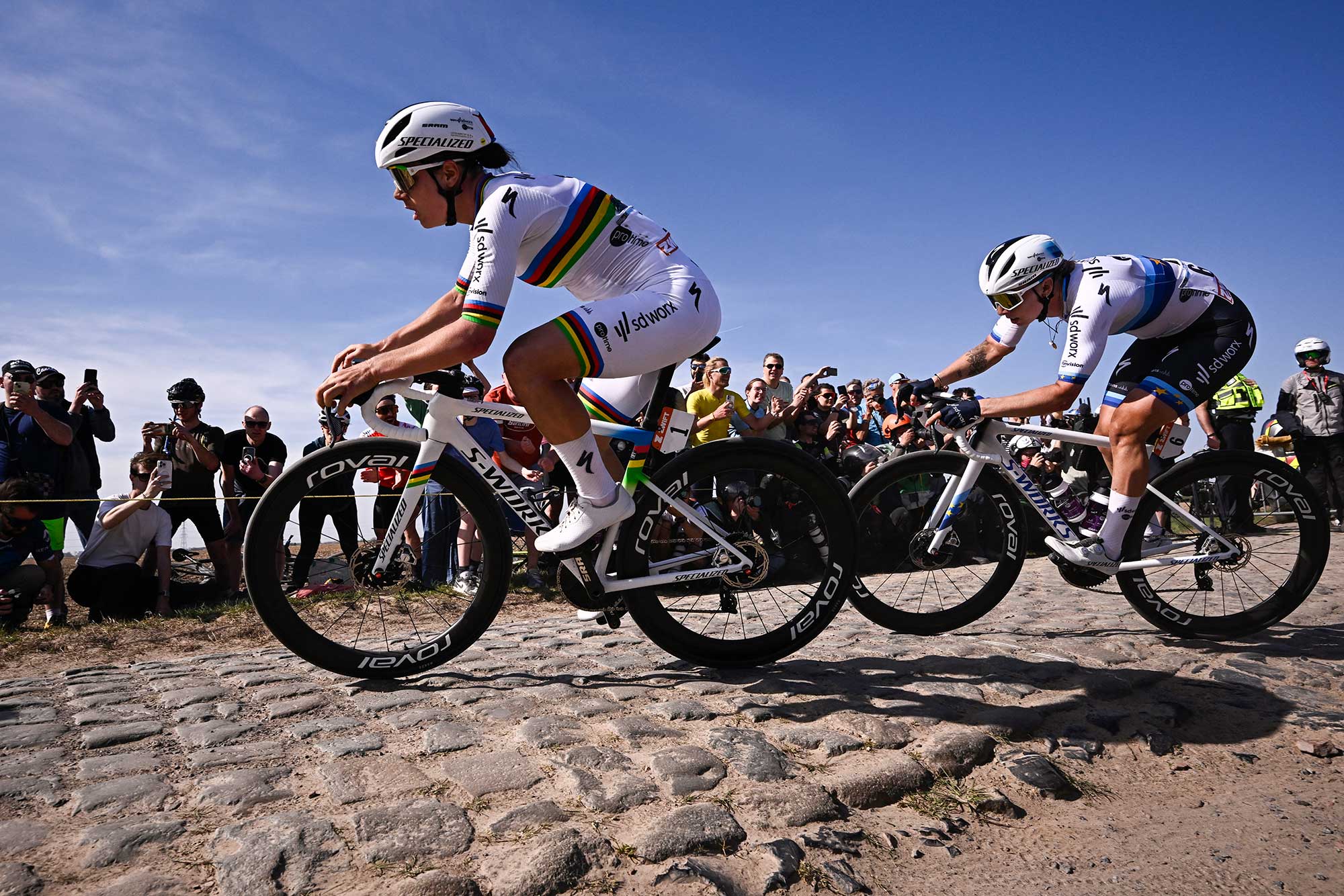
What are the differences between the climbs?
When examining the Cobbled Classics and the Ardennes races, several key differences and similarities emerge. All the races are in the region of 200km or more, 250km or greater for distances of the men's races and 150km to 160km for the women's races at the Monuments. But that is about where it stops.
The defining feature of the Cobbled Classics is, as the name states, the presence of cobbles. Here in Great Britain, we dream of riding on the smooth tarmac that populates much of the roads used for professional cycling, but the Cobbled Classics represent something completely different. These races are renowned for requiring double-wrapped bar tape, even suspension forks and fitments through the years, and wide tyres with low pressures, so brutal are the cobbles. Teams even experiment with on-the-bike tyre pressure adjustment systems.
These cobbles are themselves a great challenge, with Paris-Roubaix being the highlight of the cobbled races for its infamous sectors of body-breaking stones. Another key feature of these races, though, is the climbs.
In terms of overall elevation, these races tend not to exceed 100m of elevation gain for every 10km. Even the Tour of Flanders, with its route often taking on as many fabled cobbled climbs as possible, tops out at near 1,900m elevation in 275km distance. Meanwhile, Liège-Bastogne-Liège, the Ardennes Monument, tops out at 4,300m elevation gain in 253km.
Here lies the other prime difference: the total amount of climbing experienced and its repeated nature. We can see that the Tour of Flanders has a huge number of climbs in the latter half of the race, but the elevation gain per climb is 100-150m, whereas in Liège, it is generally 200-250m, with a far longer starting climb.
There's further evidence of this when we break down the climbs individually for some of the more famous ones.

Looking at the most famous climbs at the Tour of Flanders:
- Koppenberg 0.55km 11% avg, 26.2% max - KOM: 1:38 Tadej Pogačar 2025, QOM: 2:12 Demi Vollering 2022
- Oude Kwaremont 1.48km 4.8% avg, 10.4% max - KOM: 2:49 Wout van Aert 2025, QOM: 3:45 Demi Vollering 2022
- Paterberg 0.36km 13.4% avg, 18.7% max - KOM: 44s Jens Vanden Heede 2021, QOM: 1:08 Lorena Wiebes 2020
It's clear that, along with being cobbled, these climbs tend to have quite a steep gradient and are very short, or slightly longer but still with some double-figure maximum slopes.

When we compare this to the likes of the climbs in Liège-Bastogne-Liège:
- Côte de Stockeu 0.94km 12.9% avg, 17.3% max - KOM: 3:03 Reuben Thompson 2022, QOM: 4:05 Julie Van de Velde 2024
- Côte de la Redoute 1.51km 10.5% avg, 18.4% max - KOM: 4:01 Jarno Widar 2023, QOM: 5:01 Annemiek van Vleuten 2021
- Côte de la Roche-aux-Faucons 1.26km 10.2% avg, 14.4% max - KOM: 3:31 Mike Woods 2021, QOM: 4:20 Pauliena Rooijakkers 2024
We can see a trend that, on average, although the gradients are actually similar, the length and duration of the climbs are significantly longer.
How do these climbs test the riders?
A significant aspect of how these climbs tax the athlete differently is the physiological systems that are used over these durations. For efforts below three minutes long, cyclists predominantly use a very fast breakdown of carbohydrates via glycolysis.
During glycolysis, one molecule of glucose is converted into two molecules of pyruvate, yielding a net gain of two molecules of ATP (Adenosine triphosphate), the energy currency that powers muscle contraction, as well as two molecules of NADH (Nicotinamide adenine dinucleotide), which is another chemical compound associated with energy production.
When oxygen availability is limited, such as during anaerobic exercise, pyruvate is converted into lactate. Although lactate has long been blamed for fatigue (sorry, almost every sports commentator), it's actually the accompanying accumulation of hydrogen ions (H⁺) that contributes to a drop in muscle pH.
This acidification interferes with enzyme function and disrupts muscle contraction, ultimately contributing to the fatigue and burning sensation cyclists feel during intense efforts. Despite its limitations, glycolysis is one of the fastest ways the body can generate ATP, making it essential for performance in high-power, short-duration cycling efforts.
For these kinds of efforts, we can think back to the men’s race at Gent-Wevelgem in 2025, where Mads Pedersen attacked from the lead break on the Kemmelberg, driving over the top. This is a brutal 0.55 km climb with an average gradient of 10% and a maximum gradient of 13.8%. Pedersen doesn't post his efforts to Strava, but in 2022, Lasse Norman Leth powered up the climb in 1:24 at an average of 696 watts.
The Ardennes-style climbs, which are a bit longer, fall more into the maximal aerobic power level of efforts, akin to an Individual Pursuit effort on a bike. This is still a primarily carbohydrate breakdown-fueled effort, but it occurs via oxidative phosphorylation.
This is the body’s most efficient energy system, responsible for producing the vast majority of ATP during sustained, aerobic cycling efforts. Taking place within the mitochondria, the "powerhouses" of the cell, this process uses oxygen to generate ATP by fully oxidising fuel sources such as glucose, fatty acids, or amino acids.
Unlike glycolysis, which yields just two ATP per glucose molecule, oxidative phosphorylation can produce up to 34 ATP from a single glucose molecule through a combination of the Krebs Cycle and the electron transport chain.
As glucose is broken down into carbon dioxide and water, high-energy electrons are transferred through a series of protein complexes in the mitochondrial membrane, ultimately driving the production of ATP via a process called chemiosmosis.
The primary by-products of oxidative phosphorylation are carbon dioxide (CO₂) and water (H₂O) - both of which are easily managed by the respiratory system.
Because this system produces ATP slowly but efficiently and with minimal fatigue-inducing waste, it becomes the dominant energy supplier during efforts longer than two minutes, such as the latter half of a four-minute maximal cycling effort.
If we recall the 2021 Liège-Bastogne-Liège race, when Annemiek van Vleuten attacked up the Côte de La Redoute with 29km to go, she would have started with a more glycolytic effort before settling into a sustained maximal aerobic power attack.
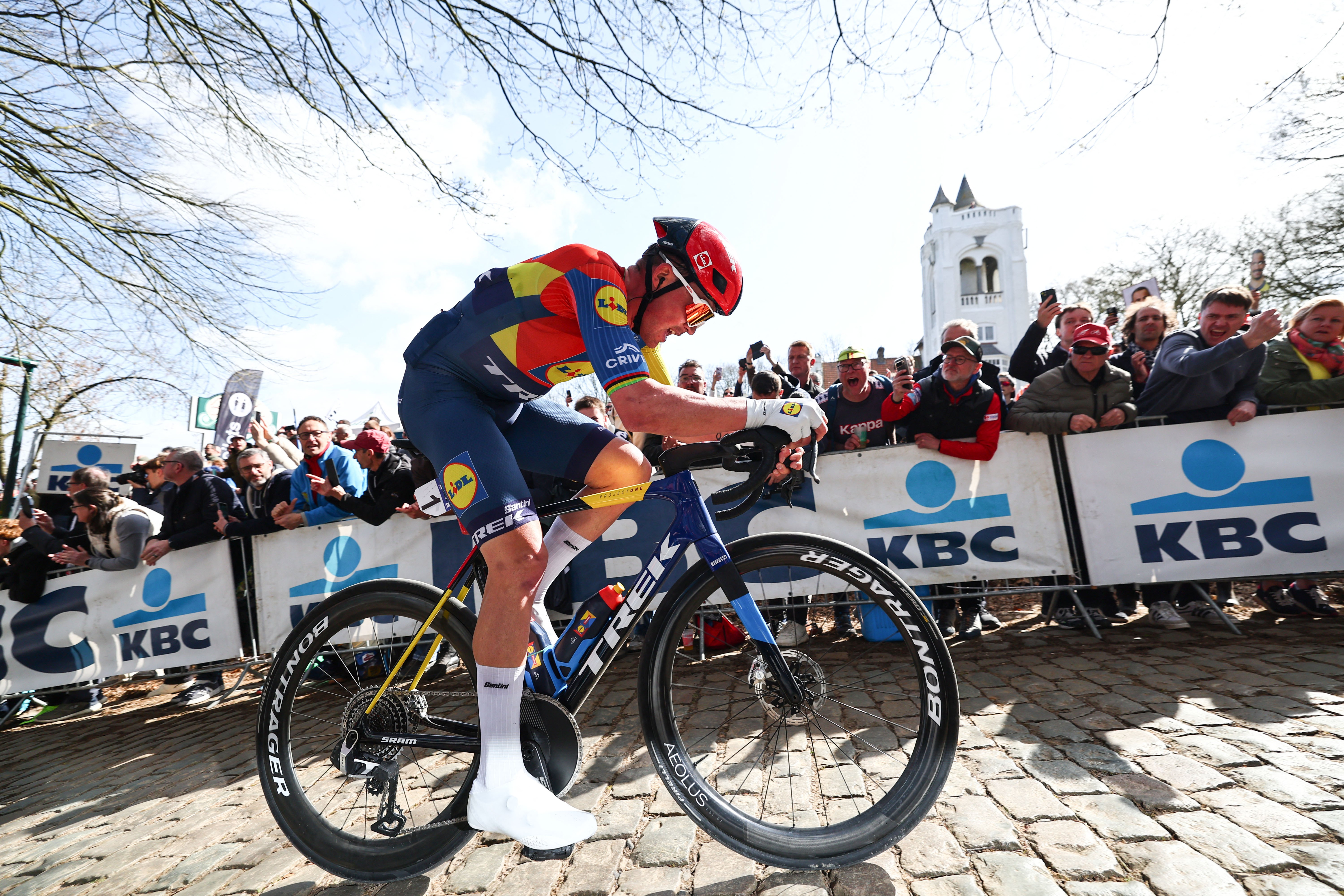
However, you might wonder how the aforementioned cobbled elements of the climbs affect performance. This has an interesting impact on the speed achieved for a few reasons.
Firstly, the road surface has a higher rolling resistance, so less speed can be achieved for the same power up. Another impact of this is the bumping sensation you can get while riding over the cobbles. This can have quite a pronounced impact on how well a rider can apply power to the rear wheel. Any disruption in pedal stroke or inefficiencies can be exaggerated, making it relatively more difficult for some riders. This is part of why cyclocross or mountain bike experience has often been attributed to improved performance on these types of climbs.
We think of riders like Van Aert, Van der Poel, along with Puck Pieterse and Ferrand-Prévot, as the CX and off-road superstars, but Pogačar is also a lesser-known CX rider from his junior years.
However, we saw in this year's Paris-Roubaix how experience on the cobbles, even on the flat, can make the difference between winning and not, when Pogačar overcooked a corner on cobbled sector 9, where Van der Poel kept it upright.
Aerodynamics, interestingly, is fairly similar between the two. Although steeper and cobbled, shorter and higher power efforts mean the cobbled climbs are tackled at a similar speed to the Ardennes climbs, with speeds ranging from 20 to 22 kph, as seen in the 2024 Liège winning data from Pogačar and his 2025 victory at Flanders.
These are slow speeds where aerodynamics has a far smaller effect than at higher speeds. This is because, as air resistance increases, drag increases at a squared rate, while the power to overcome that increases at a cubic rate to speed.
However, given the total elevation gains for each race, it is no surprise that the winning speed at Liège was 40.9 kph, while at Flanders it was 45 kph. With Roubaix being flatter, this is why we see even more prevalence of aero frames and deep wheels in that race. This may also explain why, traditionally, Grand Tour winners, often better climbers, are better suited to cross over to Ardennes races rather than cobbled ones.
Capacity for repeated effort is another key factor, applicable to both races. Although flat for the first 124km, the 2025 Tour of Flanders was anything but easy for the first half.
It’s difficult to find any professionals who share power data, but after some scouring, EF Education-EasyPost rider Colby Simmons did record power for the race. Averaging 236w for this first section, but with peaks above 1,000w and a workload of 2,430 kJ.
This was then followed by 141km at an average of 271w, as huge efforts were made up the climbs, followed by periods of lower power on the downhills. That first half is lower power, but it’s not easy by any means.
Moving to Roubaix, and again, Simmons treated us with his power data. Again, a similar power profile of 244w for the first three hours, followed by 261w for the next section. However, it is the peaks and attacks, or surges, for position before the cobbles that don’t show in the average data, but can be found when looking deeper into it. At Flanders, Simmons managed a brutal 453w up the Paterberg and 408w up the Koppenberg 231km into the race, still nearly 1 minute slower than Pogačar’s effort in the same race over just 0.55km.
Moving to Liège, Harry Sweeny shared his 2024 race power data. A total average of 271 watts for 6.5 hours demonstrates the brutal nature of that race. This includes an effort at 191km into the race of 439w for 9 minutes, followed by 384w up La Redoute for 6:16, 2:14 slower than Pogačar in the same race.
That capacity for repeated efforts, as well as resistance to fatigue, is the primary requirement for performance in these races. We see huge numbers in some e-races nowadays, but that is often isolated to a one-hour race, not 6+ hours.
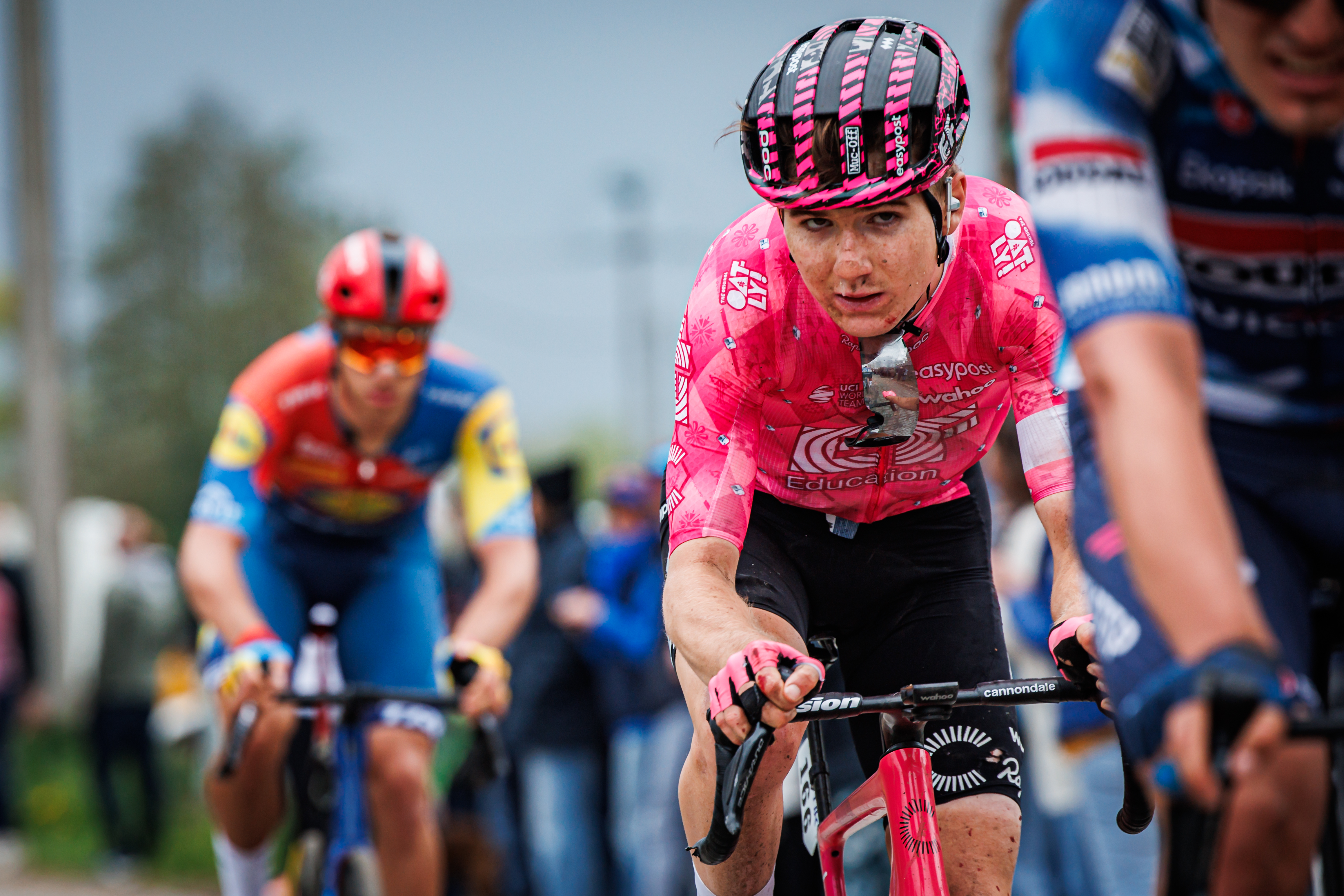
What training is required to become better at them?
So, how can we mere mortals get better at these types of climbs?
Admittedly we won’t be doing these climbs at the speeds the pros do, but for those of us who are racing on similar terrains, hunting similar style Strava segments, or are planning on doing events such as the Flanders sportive, here are a few ways in which you can train for the demands of these climbs.
We also share an insight into what the pros will be doing. I could delve into a horrendous level of detail to thoroughly cover every aspect of how these types of training improve performance, but I do have a word limit. I’d recommend reading more in related research papers.
Maximal aerobic power (MAP) efforts:
These 4–10 minute high-intensity efforts target VO₂peak, typically performed at 105–125% of Critical Power (CP), depending on age and fitness. They're designed to push oxygen uptake to its max and often reach peak heart rate. Fueling is crucial due to high carbohydrate usage. Physiologically, they stimulate AMPK (AMP-activated protein kinase) signalling, triggered by ATP breakdown, which activates PGC-1α, a key driver of mitochondrial biogenesis.
More mitochondria improve the muscle’s ability to oxidise fats and carbohydrates efficiently. These sessions not only boost aerobic capacity and energy production but also enhance psychological resilience through repeated exposure to maximal sustainable efforts.
Zone Two training:
Zone 2 (Z2) training, once a buzzword in cycling, remains highly effective, especially when performed at high volumes. After around 2.5 hours of Z2 riding, muscle glycogen becomes depleted, prompting greater reliance on fat metabolism. This sustained low-intensity effort stimulates PGC-1α, enhancing mitochondrial biogenesis and improving oxidative capacity. This occurs through signaling pathways like CaMKII and p38 MAPK, activated during prolonged muscle contractions.
Z2 training also improves insulin sensitivity via increased GLUT4 expression and promotes angiogenesis through VEGF, which is more active at low intensities. To ensure effectiveness, Z2 training should stay below LT1, typically under 70% of Critical Power (CP), as exceeding it shifts fuel use toward carbohydrates. Since LT1 can shift due to fatigue, monitoring heart rate over time offers a practical method to stay within the optimal zone. Overall, the consistent, long-duration nature of Z2 sessions makes them a cornerstone for aerobic development and metabolic flexibility.
Glycolytic capacity efforts:
Glycolytic capacity efforts are short, high-intensity efforts lasting 1–3 minutes where glycolysis is the primary energy system. Training in this zone involves performing efforts at 120–150% of your sustainable aerobic power (such as CP or FTP). These shouldn’t be all-out, but near-maximal to stress anaerobic carbohydrate breakdown.
Adaptation occurs by increasing glycolytic enzyme activity, enhancing the body’s ability to rapidly use glucose without oxygen. Carbohydrate availability also plays a key role; adequate fueling supports enzyme development and improves performance. Consistent, well-fueled training in this zone boosts power output and efficiency during sub-3-minute maximal efforts.
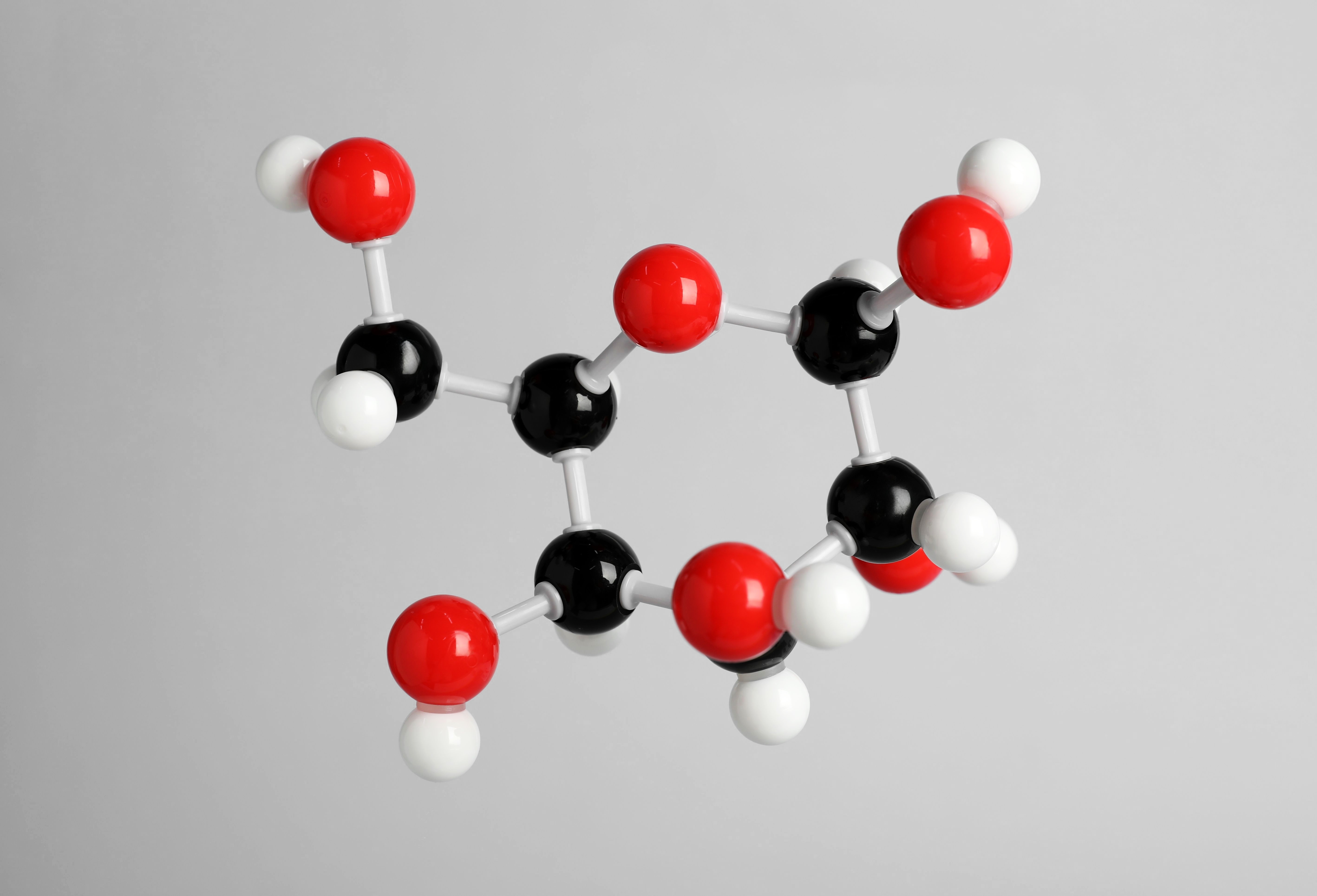
Gut training:
Due to the high energy demands of racing and limited internal fuel stores, carbohydrate intake becomes critical, with elite riders consuming up to 120–200g/hr. The gut must be trained to tolerate and absorb this volume, which is limited by the absorption capacity of glucose (~60g/hr) and enhanced by the addition of fructose, absorbed via a separate pathway. This is why many sports nutrition products now use a glucose-to-fructose ratio of 1:1 or 0.8:1.
Gradually increasing intake during training helps avoid gastrointestinal distress. To optimise utilisation, a high-carb diet combined with training adaptations like mitochondrial biogenesis and angiogenesis improves oxygen delivery and fuel breakdown efficiency.
Fatigue resistance/resilience:
Fatigue resistance has become a key performance marker in professional cycling, referring to the ability to produce high power after a significant workload. One study found race outcomes closely correlated with 5-minute power after 2,500 kJ of prior effort.
While amateurs may lose 10% or more of peak power, top pros limit this drop to under 5%. With pros often riding 6500+ kJ in long races, training must mimic this by adding high-intensity efforts late in long rides. Improving fatigue resistance involves building endurance and repeatedly performing strong efforts in a pre-fatigued state to sustain peak output under pressure.
Resistance training:
Resistance training is often overlooked or misapplied in cycling, yet it is highly effective when focused on strength and power rather than high-rep endurance work. Strength training involves lifting heavy loads with low repetitions (3–6) at low speeds to build torque, thereby improving time to exhaustion and time trial performance.
Power training reduces load but increases movement speed to develop explosive force production, key for sprints and attacks. Both methods enhance muscle fibre recruitment, increase peak power output, and slow muscle fatigue, making them valuable tools for improving performance in long, high-intensity races. Done properly, it complements rather than replaces cycling training.
Why are some riders better at one type of race?
What’s particularly interesting about the Cobbled Classics and the Ardennes Classics, is that there is becoming more of a crossover in performance across them in the men’s field, and even more so in the women’s.
The likes of Vollering, Roglič, Pogačar, and Kopecky are all riders who can perform across the board on these terrains as well as Grand Tours, especially Kopecky and Pogačar. There is also a degree of crossover from cobbled specialist to Ardennes conqueror as well, with Van der Poel winning the Amstel Gold Race in 2019 and finishing on the podium of the 2024 Liège-Bastogne-Liège. But why do some riders specialise, while others are more versatile?
More often than not, the Cobbled Classics are the real outliers, where Grand Tour riders tend not to perform as well historically, especially with the trend of more specialist riders emerging up until 2020. A significant part of this is that these more anaerobically focused efforts, along with the slower speeds at which the cobbles are tackled, have tended to suit riders with more muscular builds and huge power outputs, but lower relative power-to-weight ratios, compared to the Grand Tour stars.
Cold weather also has an impact, as more muscle and power can generate more heat; however, it also works the other way, with these riders often struggling more in the heat. The likes of Pedersen, Jasper Phillipsen, and Lorena Wiebes are good examples of riders who are more Classics or sprint specialists, with huge anaerobic and sprint powers, which are ideal for these shorter duration efforts. They’re all great at fatigue resistance as well, as they can all win later stages in Grand Tours to boot.
We then have riders who are better suited to the Ardennes-style of races, and more often than not, these are riders who can also win Grand Tours. A significant reason for this is the much higher volume of climbing that these races entail, so the power-to-weight ratio starts to have a more pronounced impact on performance.
That’s not to say the likes of Van der Poel can’t perform well here, as he is capable of immense watts-to-kilo; however, to do 6w/kg for him is a lot more work than for a smaller rider, so it uses more energy, and that has an impact on fatigue resistance.
When we think of the brutal Mur du Huy in Flèche Wallonne, 1.23km of 11.7% average and 18.9% max, but only a 3-minute effort for men and a 4-minute effort for women, that’s relatively short, but that steepness at the end of a long race tests the W/Kg but also the fatigue resistance, something Grand Tour riders often have in spades.

What is particularly interesting, though, are the riders who can do all three, and this is an incredibly small list of riders nowadays, whereas the likes of Merckx, Sean Kelly, and Grand Tour stars of old were also Classics superstars. This list now is pretty much limited to Kopecky and Pogačar, with Matteo Jorgenson also getting close to breaking into this category, but not quite.
These are riders who can win or podium in a Grand Tour, win a hilly Classic, or a cobbled Monument. What sets these two riders apart is that they are not traditional Grand Tour riders. Both are more heavily muscular than the svelte and small-bodied three-week riders we're often used to seeing conquer the high mountains, and this potentially indicates a switch in how riders will develop and perform in the future.
Part of what potentially allows this to be possible is the increase in fueling that riders are doing in races. Pogačar famously said his Zone 2 is 320-340w, that is 1,200 kJ/Hr. If half of that is from carbs, then that’s 150g/Hr of carbs being used (1g of carbs is around 4 kJ). When considering the riding styles of Pogačar and Jonas Vingegaard, Pogačar is far more explosive in his attacks. In contrast, Vingegaard is a long-burn attacker, setting a tempo that saps legs before launching a decisive but less explosive attack.
This is partly due to a greater level of muscle mass, and also perhaps indicates why Vingegaard has traditionally performed better in both heat and high altitude than Pogačar, both factors that drive up carbohydrate usage. Greater muscle mass and power output produce more heat.
This greater muscle mass, however, does allow for blistering attacks even up short 1-minute climbs, as well as huge power outputs and high W/Kg up the longer 5+ minute Ardennes climbs, as well as the high mountains.
Indeed, the average weight of WorldTour riders is increasing, which is a positive trend to see. Given the prevalence of eating disorders within cycling, a greater focus on adequate fueling and building muscle mass also leads to far healthier outcomes in terms of bone mineral density and hormone balance.
Ardennes specialists and cobbled classics heroes
So there we have it, your in-depth breakdown into the fairly substantial differences between the Cobbled Classics and Ardennes Classics, what it takes to conquer them, and the training requirements to become better at these.
Also, why are we seeing such a mix of both specialists and crossover specialists?
With the Ardennes races underway, it is interesting to see if Ardennes specialists, Cobbled Classics heroes, or Grand Tour podium riders can contest and win these hillier one-day Classics like Liège-Bastogne-Liège.
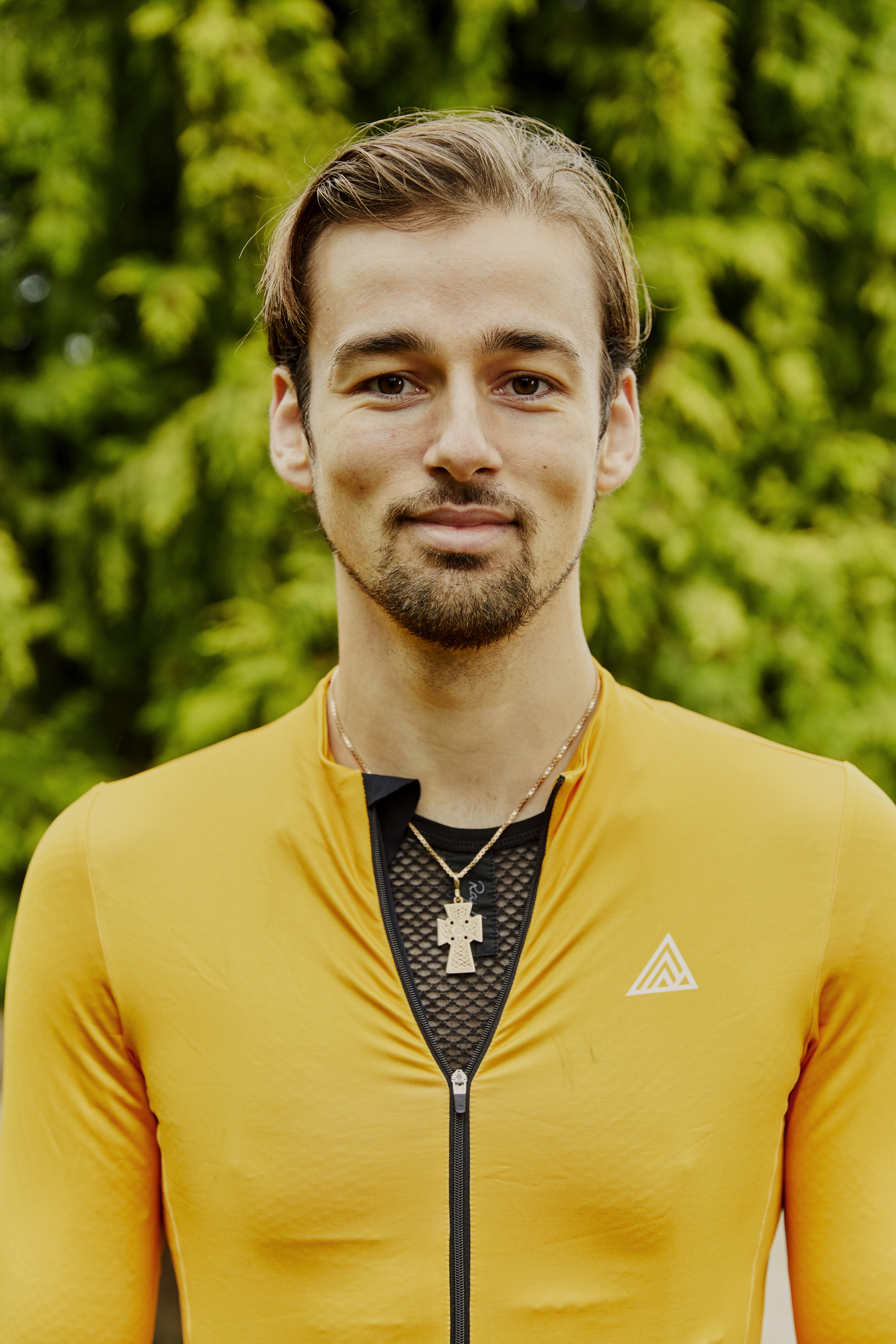
Freelance cycling journalist Andy Turner is a fully qualified sports scientist, cycling coach at ATP Performance, and aerodynamics consultant at Venturi Dynamics. He also spent 3 years racing as a UCI Continental professional and held a British Cycling Elite Race Licence for 7 years. He now enjoys writing fitness and tech related articles, and putting cycling products through their paces for reviews. Predominantly road focussed, he is slowly venturing into the world of gravel too, as many ‘retired’ UCI riders do.
When it comes to cycling equipment, he looks for functionality, a little bit of bling, and ideally aero gains. Style and tradition are secondary, performance is key.
He has raced the Tour of Britain and Volta a Portugal, but nowadays spends his time on the other side of races in the convoy as a DS, coaching riders to race wins themselves, and limiting his riding to Strava hunting, big adventures, and café rides.